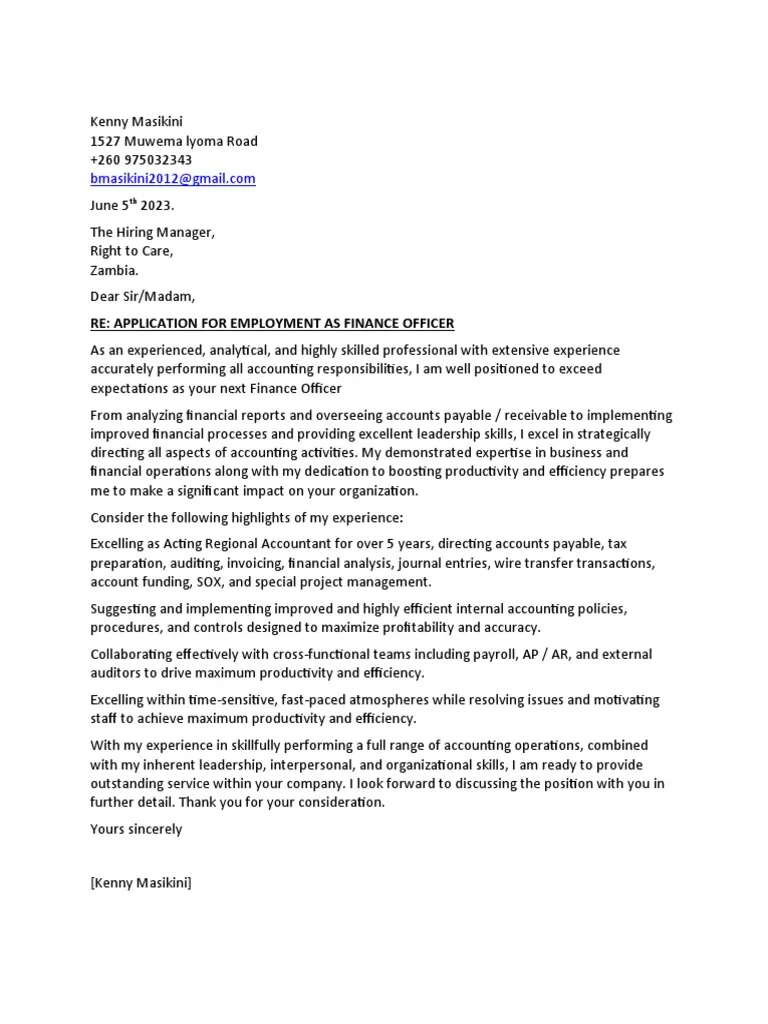A finance officer cover letter is your first introduction to a potential employer. It’s a crucial document that can significantly influence whether you get an interview. This guide provides a step-by-step approach to crafting a compelling cover letter that highlights your skills, experience, and enthusiasm for the finance officer role. A well-written cover letter can be the key to unlocking your dream job in finance. The cover letter should be more than just a summary of your resume; it should be a persuasive marketing tool that showcases your unique value proposition and why you’re the ideal candidate.
Finance Officer Cover Letter Structure
Structuring your finance officer cover letter effectively ensures that your message is clear, concise, and impactful. A well-organized cover letter makes it easy for the hiring manager to quickly grasp your qualifications and assess your suitability for the role. Following a standard structure also demonstrates professionalism and attention to detail. The structure should include contact information, a salutation, an introductory paragraph, body paragraphs highlighting skills and experience, a paragraph explaining why you are a good fit, a concluding paragraph, and a formal closing.
Contact Information
Begin your cover letter with your contact information, followed by the recipient’s details. This section is crucial for the hiring manager to easily reach you. Ensure that your details are accurate and up-to-date to avoid any communication issues. This includes your full name, address, phone number, and professional email address. Including a link to your LinkedIn profile can also be beneficial, as it provides the hiring manager with additional information about your professional background and network.
Your Details
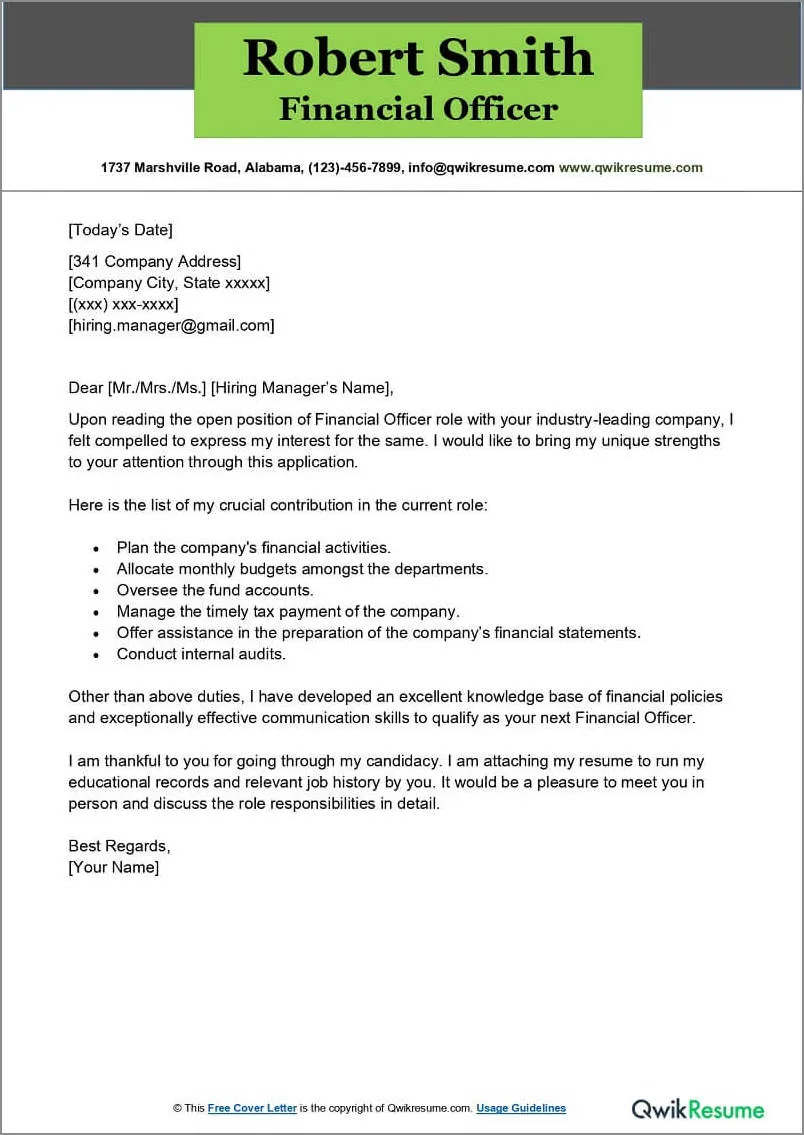
Place your name, address, phone number, and email at the top left or right corner of the page. Make sure your email address sounds professional and is appropriate for business correspondence. Double-check all contact information for accuracy to avoid any potential communication errors. Ensure your contact details are easily readable and stand out from the rest of the text. Including your LinkedIn profile link is a great way to give recruiters quick access to your professional background.
Recipient Details
Below your details, include the recipient’s information. Try to find the hiring manager’s name and title to personalize your cover letter. If you can’t find the hiring manager’s name, use the title, such as ‘Hiring Manager.’ Always verify the company’s address and contact information to ensure accuracy. This shows that you have taken the time to research the company and are genuinely interested in the position. Addressing the letter to a specific person makes it more likely to be read and remembered.
Salutation
Start with a professional salutation. Use ‘Dear Mr./Ms./Mx. [Last Name]’ if you know the hiring manager’s name. If the name is unavailable, use ‘Dear Hiring Manager.’ Avoid generic greetings like ‘To Whom It May Concern,’ as these can make your application seem impersonal. A personalized salutation shows that you have taken the time to research the company and the role. It sets a positive tone from the beginning of your cover letter.
Body Paragraph 1 Introduction
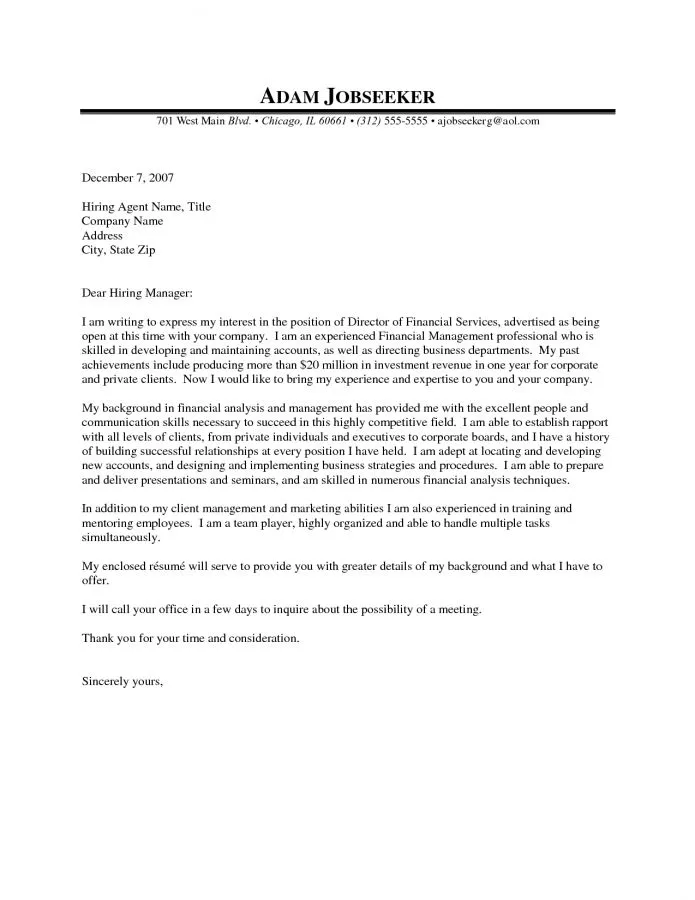
The introduction should state the position you’re applying for and where you saw the job posting. Briefly mention your key qualifications or the most relevant skills that make you a strong candidate. The introduction should capture the reader’s attention and make them want to read more. Briefly mention your key qualifications or the most relevant skills that make you a strong candidate. State the role you are applying for and briefly mention why you are a good fit.
Highlighting Your Skills and Experience
The body of your cover letter is where you highlight your skills and experience relevant to the finance officer role. Provide specific examples of how you’ve used your skills to achieve results in previous roles. The body should showcase why you’re the ideal candidate. It should demonstrate your understanding of the finance officer responsibilities and explain how your skills and experience align with the company’s needs. Use clear and concise language to make your accomplishments easy to understand.
Showcasing Relevant Experience
Select experiences that directly relate to the finance officer role. Use the job description to identify the key skills and responsibilities the company is seeking. Describe your experience in accounting, budgeting, financial analysis, and other relevant areas. Tailor your descriptions to match the specific requirements mentioned in the job posting. Highlight specific projects or tasks where you demonstrated these skills. Focus on what you achieved in previous roles. Be specific about the types of financial reports you’ve prepared.
Quantifiable Achievements
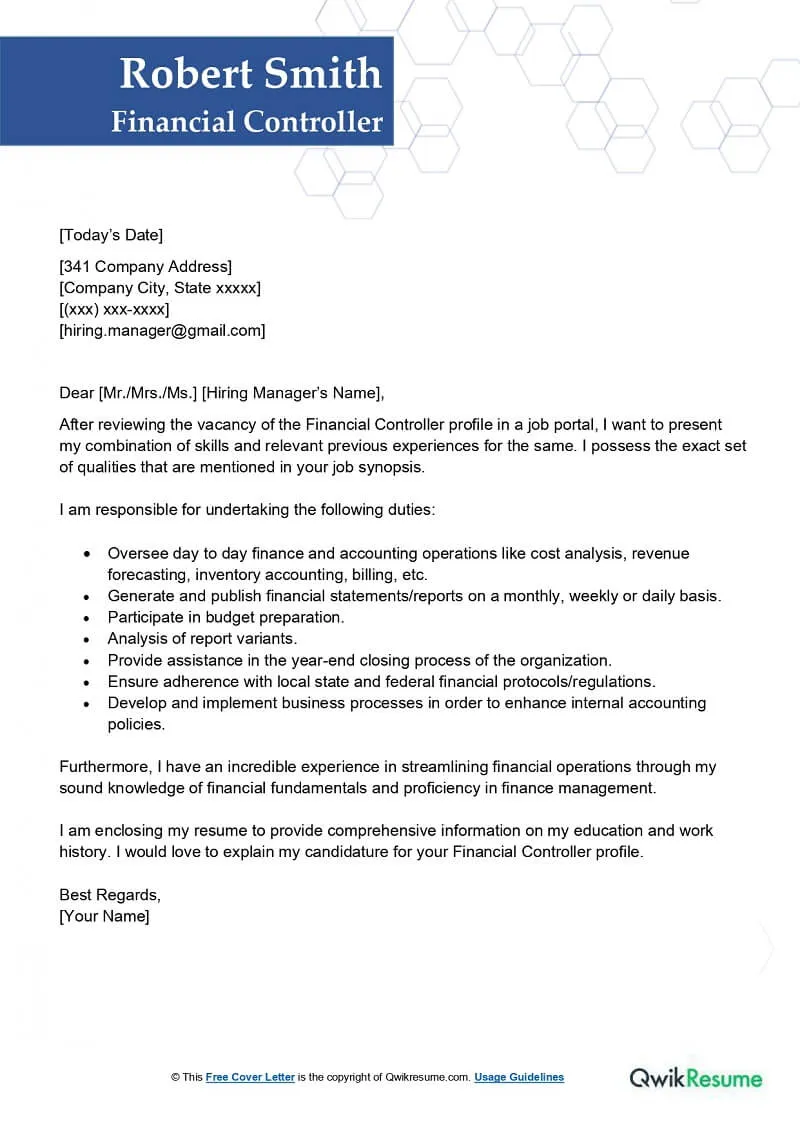
Use quantifiable achievements to demonstrate your impact in previous roles. Instead of saying ‘improved efficiency,’ state ‘reduced processing time by 15%.’ Use numbers and data to support your claims and show the value you brought to your previous employers. The use of numbers gives the hiring manager a clear understanding of your achievements. Some other achievements you can include include streamlining financial processes, reducing costs, and improving financial reporting accuracy. Quantifiable achievements provide tangible evidence of your abilities.
Demonstrating Knowledge of Finance Officer Responsibilities
Demonstrate your understanding of the finance officer’s key responsibilities. Discuss your experience in financial planning, budgeting, forecasting, and risk management. Show that you’re familiar with accounting principles and financial regulations. Highlight your knowledge of financial reporting, analysis, and internal controls. Showing familiarity with accounting principles and financial regulations. Highlight any experience with financial software or systems. Explain how you have ensured compliance and accuracy.
Body Paragraph 2 Why You’re a Good Fit
In this paragraph, explain why you’re a good fit for the company and the role. Tailor your response to the company’s values and the specific requirements of the job. Research the company’s mission, values, and culture to align your skills and experience. Demonstrate your enthusiasm for the role and the company. Connect your skills and experience to the specific needs of the position. Emphasize how your skills and experience align with the company’s needs. Explain how your goals align with the company’s mission.
Body Paragraph 3 Expressing Enthusiasm
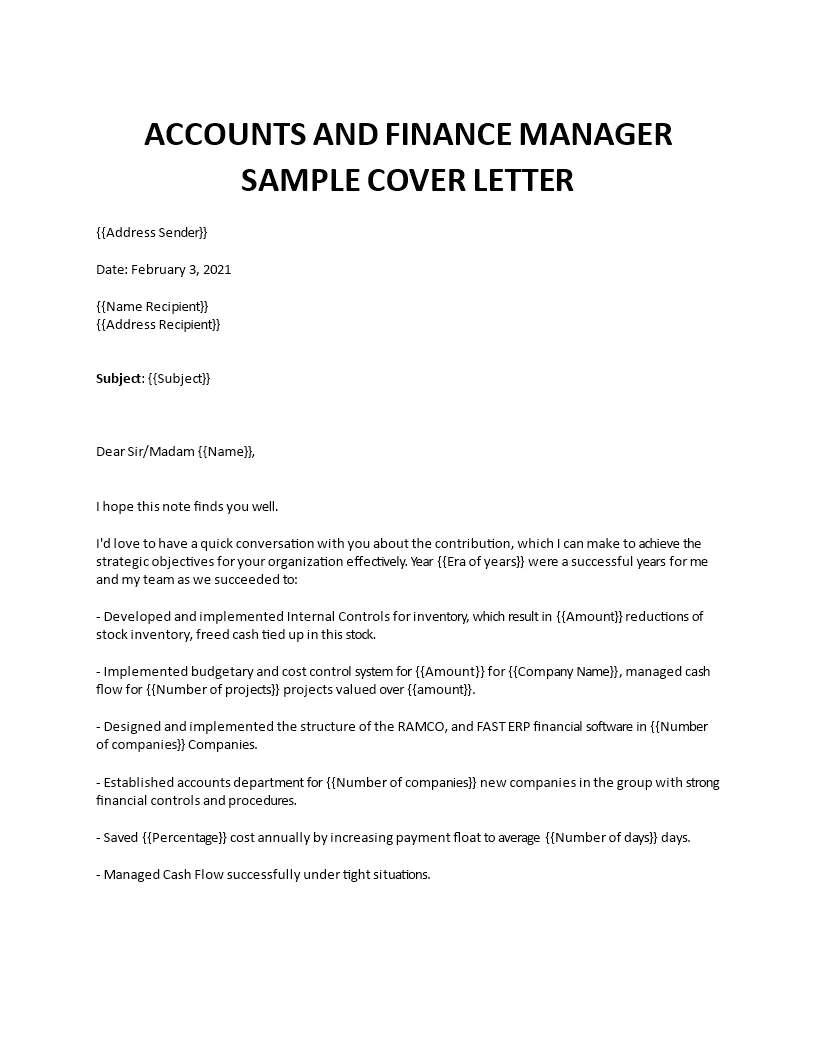
Conclude your cover letter by expressing your enthusiasm for the opportunity. Reiterate your interest in the position and the company. This is your chance to create a lasting impression. Be positive and show your eagerness to learn more about the role. Express your interest in an interview and provide your contact information again. End with a strong call to action. Restate your interest in the position and the company. Use a confident and professional tone to show you are eager.
The Importance of Tailoring Your Cover Letter
Tailoring your cover letter to each job application is crucial for making a strong impression. Generic cover letters can come across as impersonal and may not highlight your relevant skills and experience. By personalizing your cover letter, you show that you’ve taken the time to understand the company’s needs and the specific requirements of the role. This can significantly increase your chances of getting an interview. Tailoring your cover letter is a critical step in the job application process. Tailor your cover letter to demonstrate your understanding of the company’s needs. Tailoring your cover letter to match the job description.
Addressing the Specific Job Requirements
Carefully review the job description and identify the key skills and qualifications the employer is seeking. Address each of these requirements in your cover letter, providing specific examples from your experience. This shows the hiring manager that you have the skills and experience needed to succeed in the role. Show that your skills match the job requirements listed in the job description. Tailor your cover letter to the specific requirements and responsibilities outlined in the job posting. Explain how your qualifications align with the company’s needs.
Using Keywords from the Job Description
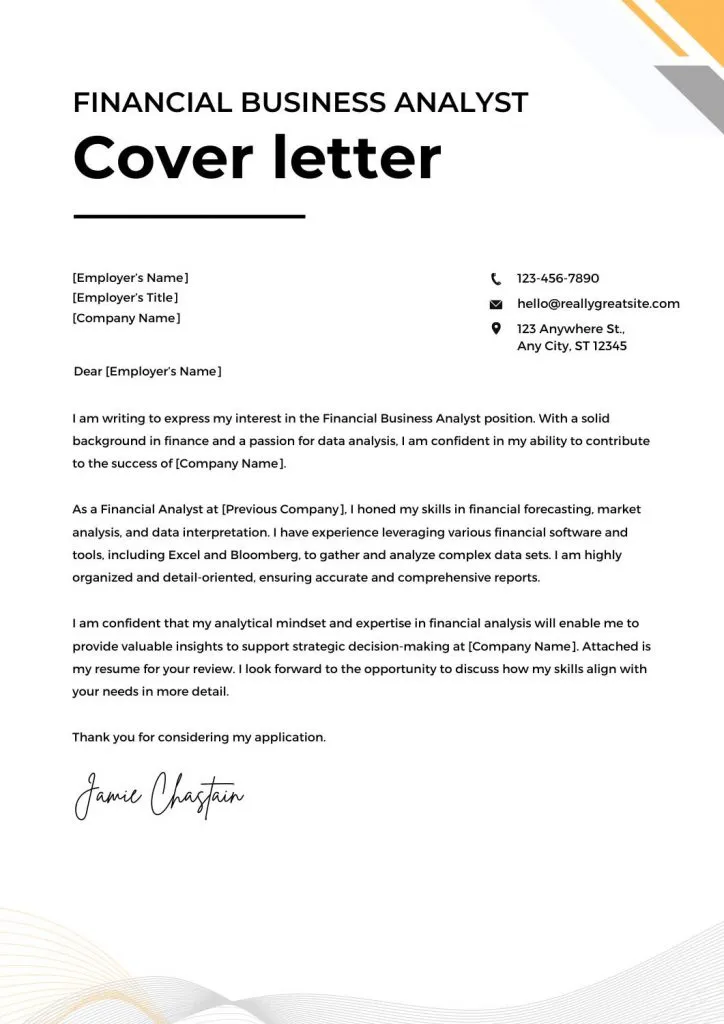
Incorporate keywords from the job description into your cover letter. This can help your application get past applicant tracking systems (ATS) and make it more likely to be seen by a human reader. Using relevant keywords also demonstrates that you understand the requirements of the role. Incorporating keywords improves the chances of your application. Keywords demonstrate your understanding of the role. This also helps you to ensure that your cover letter is relevant and targeted.
Cover Letter Formatting and Style
The formatting and style of your finance officer cover letter play a critical role in how it is perceived. A well-formatted letter is easy to read and shows that you pay attention to detail. Using a professional tone and clear, concise language also ensures that your message is easily understood. A clear and concise format helps to present your information. Professional tone and clear language make your message understandable. A professional look shows you pay attention to detail.
Font and Formatting Guidelines
Choose a professional font such as Times New Roman, Arial, or Calibri. Use a font size of 10 to 12 points for readability. Use single-spacing within paragraphs and double-spacing between paragraphs. Use left alignment with a justified margin. Maintain a consistent format throughout your cover letter. Ensure that the format is consistent throughout the document. Use clear formatting for better readability. Use a professional font to give a clear message.
Proofreading and Editing
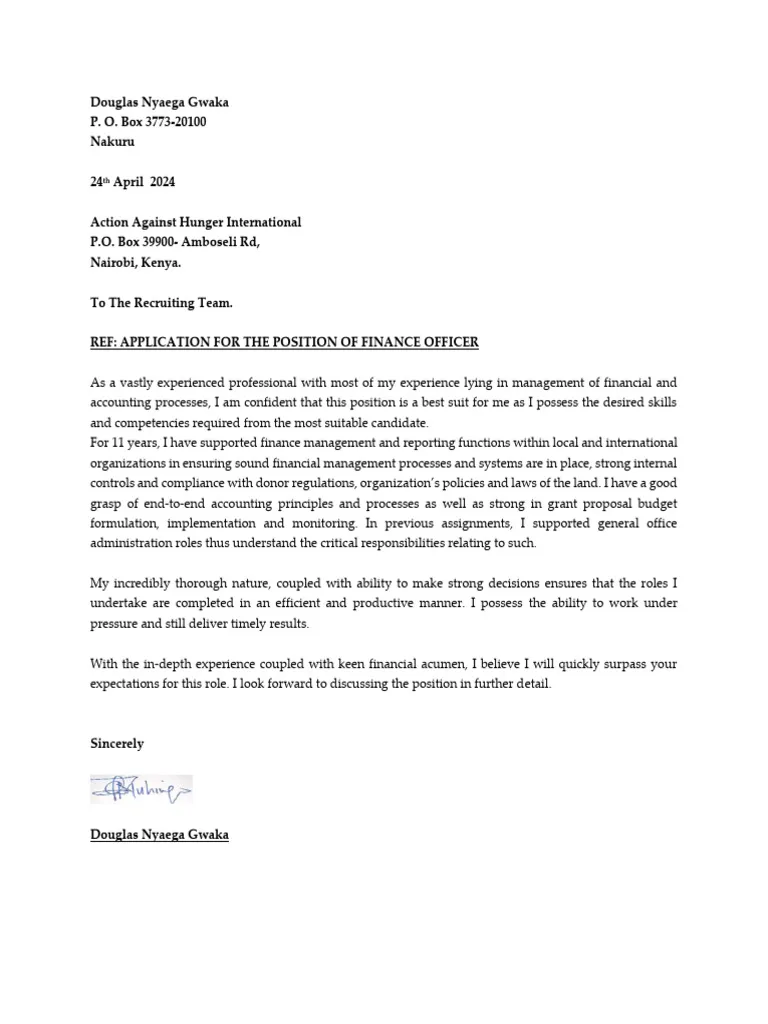
Proofread your cover letter carefully for any errors in grammar, spelling, and punctuation. Read your cover letter aloud to check for awkward phrasing. Ask someone else to review your cover letter for any errors. Correcting errors will show the hiring manager that you are detail-oriented. Proofreading is a necessary step to avoid errors. Review your letter before submitting. Getting a second opinion ensures that you are presenting the best version of your letter.
Closing Your Cover Letter
The closing of your cover letter is your last chance to make a positive impression. A professional closing and a clear call to action can significantly increase your chances of moving to the next stage of the hiring process. End with a formal closing and a clear statement of your interest in the position. Express your interest and make sure you include a call to action. Concluding your cover letter with a call to action demonstrates enthusiasm.
Formal Closing and Signature
Use a formal closing such as ‘Sincerely,’ ‘Best regards,’ or ‘Yours sincerely.’ Leave space for your signature, and then type your full name below. If you’re submitting a digital cover letter, you can type your name or use a scanned signature. A formal closing and signature shows professionalism and attention to detail. Ensure you have a formal closing. Adding your name shows a degree of professionalism.
Follow-up
Express your interest in an interview in your closing paragraph. Include your contact information once more, making it easy for the hiring manager to reach you. Include a call to action by stating your availability and desire to discuss your qualifications further. A simple ‘I look forward to hearing from you soon’ is also effective. Provide your contact information again, and include a call to action. Show your enthusiasm for the role and the company, which leaves a lasting impression on the reader.
Common Mistakes to Avoid
Avoiding common mistakes in your finance officer cover letter can significantly improve your chances of success. These mistakes can create a negative impression and undermine your application. Be aware of these common pitfalls and take steps to avoid them. Addressing and fixing these mistakes shows your care and professionalism. Make sure your letter is free from common pitfalls. Always read through your letter before submitting it.
Typos and Grammatical Errors
Typos and grammatical errors can make your application appear unprofessional and careless. Always proofread your cover letter carefully before submitting it. Using a spell checker is important. However, don’t rely on it alone, as it may not catch all errors. Have someone else review your cover letter to catch any mistakes you may have missed. Typos and grammatical errors can be very distracting to the reader. Always proofread your cover letter carefully before submitting it. Ensure your letter is well-written and error-free to make a good impression.
Generic Cover Letters
Avoid using a generic cover letter that is not tailored to the specific job or company. Generic cover letters show a lack of interest and can make your application seem less compelling. Customize your cover letter for each application, highlighting the skills and experiences most relevant to the job. Addressing the company’s specific needs shows genuine interest. Tailor your cover letter to make it about the specific job and company. Use a tailored cover letter to make a lasting impression.
Ignoring the Job Description
Failing to address the requirements outlined in the job description is a significant mistake. Use the job description to identify the key skills, qualifications, and experiences the employer is seeking. In your cover letter, provide specific examples of how you meet these requirements. This shows the hiring manager that you understand the role and have the necessary skills to succeed. Always address all of the requirements outlined in the job description. Match your qualifications and skills. Tailor your letter to show you meet the qualifications.
